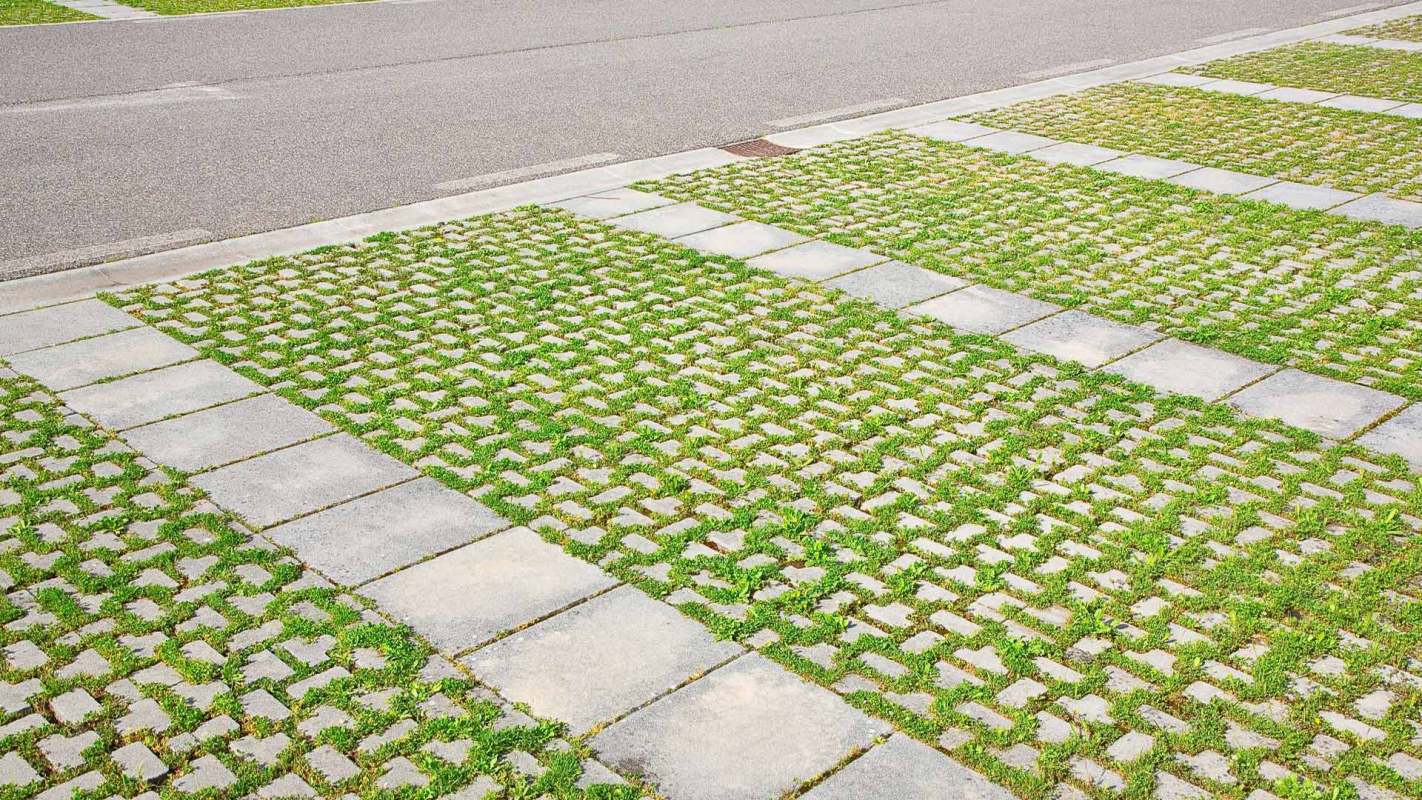Sometimes, when it rains, it floods. But a solution to help prevent flooding issues, especially in urban areas, could be right under our feet.
Permeable pavement is a type of porous surface made up of tiny open pores that allow water to soak through. Concrete, asphalt, and open pavers are all classed as types of permeable pavement often used for sidewalks, parking lots, and driveways.
How does permeable pavement work?
By allowing water to soak through, this kind of pavement helps reduce surface water and runoff. Instead, the water filters through the gravel or stone and is stored in reservoirs beneath the surface where it is slowly released into the soil below.
During stormy seasons, these are handy at storing excess water and are also known as green pavement, thanks to the clever way in which the stone and gravel act as a natural filter for any pollutants in the water.
Why is permeable pavement necessary?
According to the Upper Midwest Water Science Center, the number of cities and urban buildings replacing natural landscapes is having a significant impact on water drainage across the world.
"By replacing natural land covers (like grasslands and forests) with impervious surfaces (like parking lots and streets), we lose the water retaining role of the soil and vegetation," says William R Selbig, a research hydrologist.
By reducing the amount of soil and vegetation that can store water, we increase surface runoff which could lead to "dangerous floods, severe erosion damage to our stream channels, diminished recharge of groundwater, and degraded habitat for our fisheries."
What are the benefits?
The Upper Midwest Water Science Center reported that "in the worst cases, the amount of pollutants in urban runoff are high enough to prevent us from being able to swim or fish in our local waters."
Permeable pavement reduces the concentration of pollutants physically (in the pavement or soil), chemically (by bacteria breaking down pollutants), or biologically (by trapping them in gaps between pavers).
Another benefit is that the pavement is made with recycled materials. Manufacturers can use byproducts — such as slag cement from iron manufacturers — to make up the concrete, reducing the amount that ends up in a landfill.
Permeable pavement also helps balance out temperatures in hot and cold weather. Since water seeps through the pavement, there is less on the surface to form ice, making surfaces safer for walking and driving.
Alternatively, in summer months, the circulation of precipitation through the pavement helps keep the surfaces cooler.
Are there any disadvantages?
While a pretty great invention, there are a few drawbacks to consider. Compared to traditional pavement surfaces, it is more expensive to install, as well as more difficult to maintain.
Fine particles like sand might block the space between pavers or the pores in the surface, causing a backlog of water to collect on the pavement — which defeats the whole point.
But as long as it is regularly checked and cleaned, the installation of permeable pavement will help reduce levels of pollutants in our water system and help manage excess water in our cities.
Join our free newsletter for weekly updates on the coolest innovations improving our lives and saving our planet.









